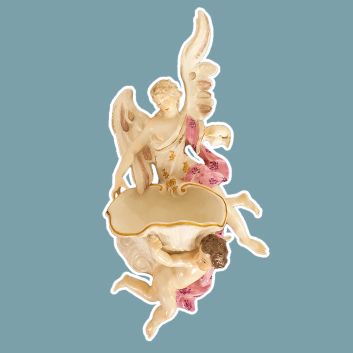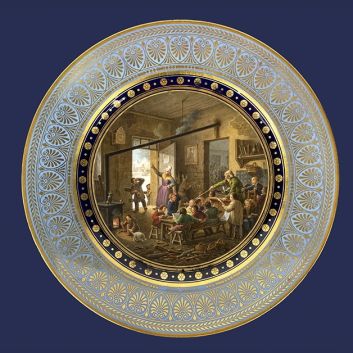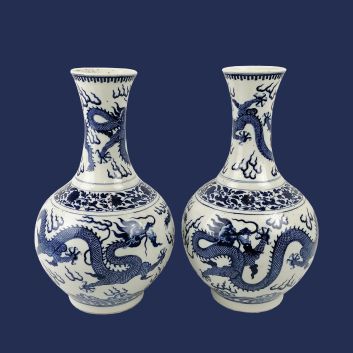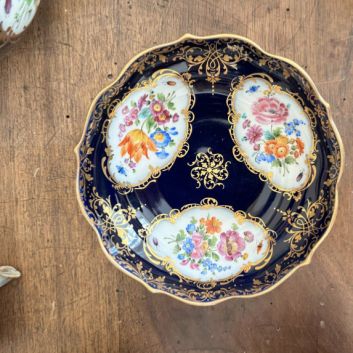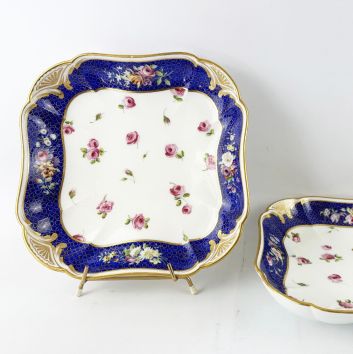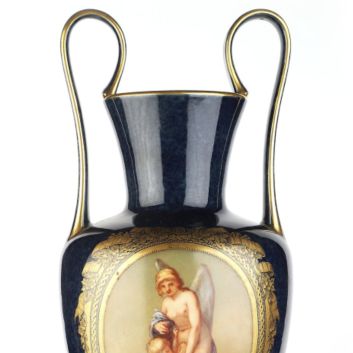Cote et valeur de la porcelaine de Meissen : biscuits, vases, services...
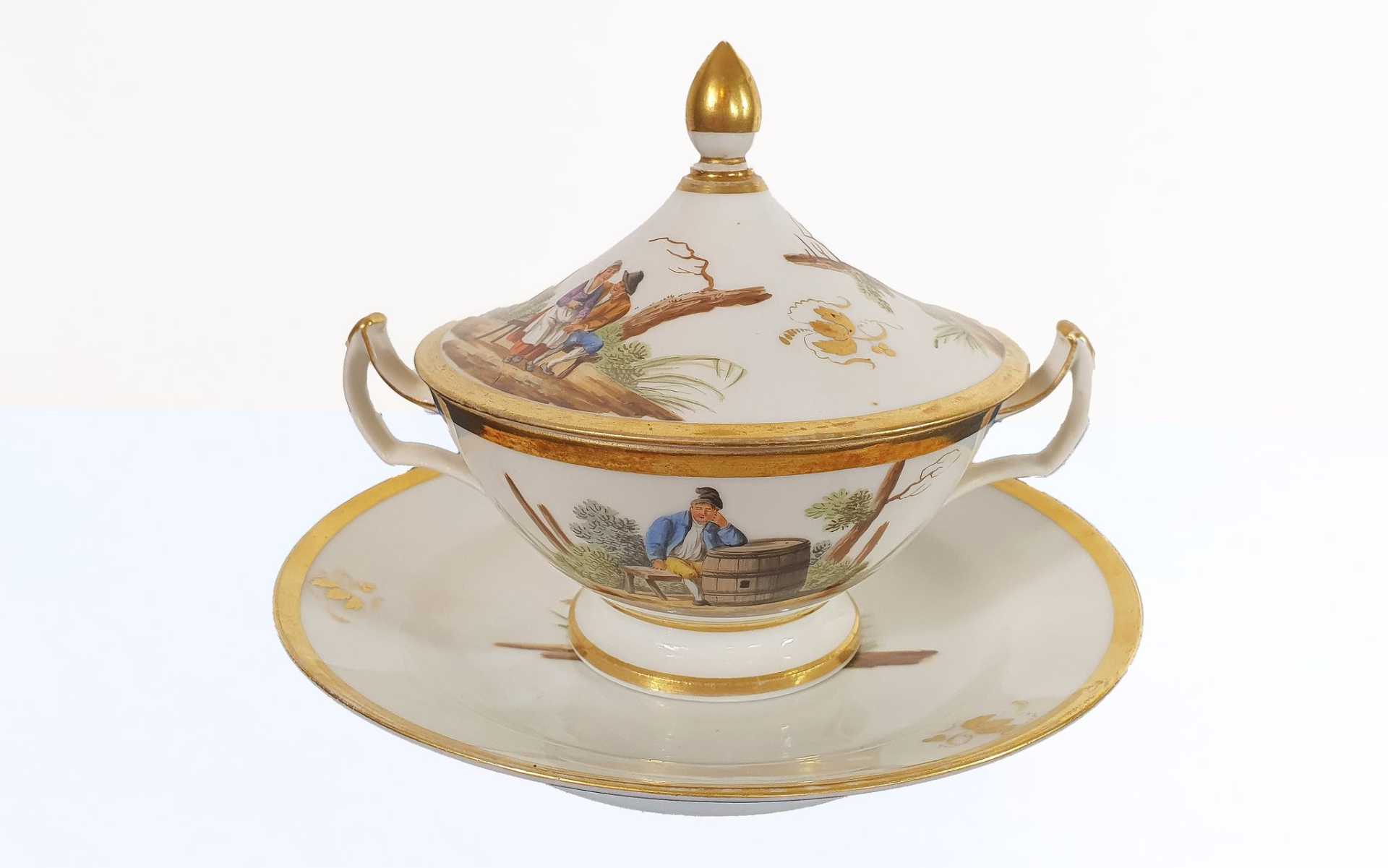
Si vous détenez un ou plusieurs objets de la manufacture Meissen, ou d’après, et que vous souhaitez connaître sa valeur, nos experts et commissaires-priseurs agréés par l’État vous offriront leurs services d'expertise.
Nos spécialistes s’emploieront à réaliser une expertise gratuite de votre pièce, et vous transmettront une estimation précise de sa valeur sur le marché actuel.
Par la suite, si vous désirez vendre votre œuvre, nous vous orienterons vers le meilleur dispositif possible pour en obtenir un prix optimal.
Cote et valeur de la porcelaine de Meissen
La porcelaine de Meissen est connue et appréciée dans toute l’Europe. Elle est une des premières manufactures royales, fondée par Auguste le Fort, en Allemagne. Aujourd’hui, le prix de certaines pièces ne cesse de croître au marteau des commissaires-priseurs.
Les groupes sculptés en porcelaine et les pièces avec des émaux sont particulièrement prisés, notamment par les acheteurs français et allemands, et le prix auquel elles se vendent sur le marché de l’art s’échelonne entre 10€ et 500 000€, un delta considérable mais qui en dit long sur la valeur qui peut être attribuée aux porcelaines de Meissen.
En 2018, un service en porcelaine de Meissen, à émaux peints et avec des dorures, datant du XVIIIème siècle a été vendu à hauteur de 68 750€, tandis qu’il était estimé entre 15 000 et 20 000€.
Ordre de valeur allant d’une porcelaine simple à la plus prestigieuse
Type d'objet en porcelaine de Meissen | Résultat |
|---|---|
Service à thé/café et assiettes | De 10 à 350 000€ |
Vase | De 10 à 500 000€ |
Sculpture/groupe sculpté en biscuit | De 5 à 105 000€ |
Autre objet (veilleuse, carafe) | De 10 à 70 840€ |
Réponse en - de 24h
Style et technique de la porcelaine de Meissen
Le style et la technique de la porcelaine de Meissen se distinguent dès ses débuts par une maîtrise exceptionnelle, reposant sur la découverte du kaolin près de la ville.
En s’inspirant des porcelaines importées d’Orient, principalement de Chine et du Japon, la manufacture adopte des méthodes précises qui lui permettent de produire de la porcelaine dure, surpassant ainsi les productions européennes contemporaines.
La technique utilisée à Meissen repose sur l’utilisation de ce kaolin pur, mélangé à des argiles spécifiques, créant ainsi une pâte résistante qui peut être façonnée en formes variées.
Les artisans de Meissen, véritables maîtres dans l’art de la céramique, travaillent avec une précision minutieuse, donnant naissance à des pièces aux formes élégantes, souvent décorées de motifs floraux ou inspirés des arts asiatiques.
La cuisson à haute température, essentielle pour obtenir la solidité et la translucidité de la porcelaine dure, est réalisée dans des fours spécialement conçus.
Une fois cuites, les pièces sont minutieusement peintes à la main par des artistes spécialisés, utilisant des pigments d’une grande finesse.
Ce procédé de décoration, unique à Meissen, est reconnu pour la vivacité des couleurs et le soin apporté aux détails. Ainsi, chaque pièce issue de la manufacture incarne l’équilibre parfait entre technique et esthétique, marquant durablement l’histoire de la porcelaine européenne.
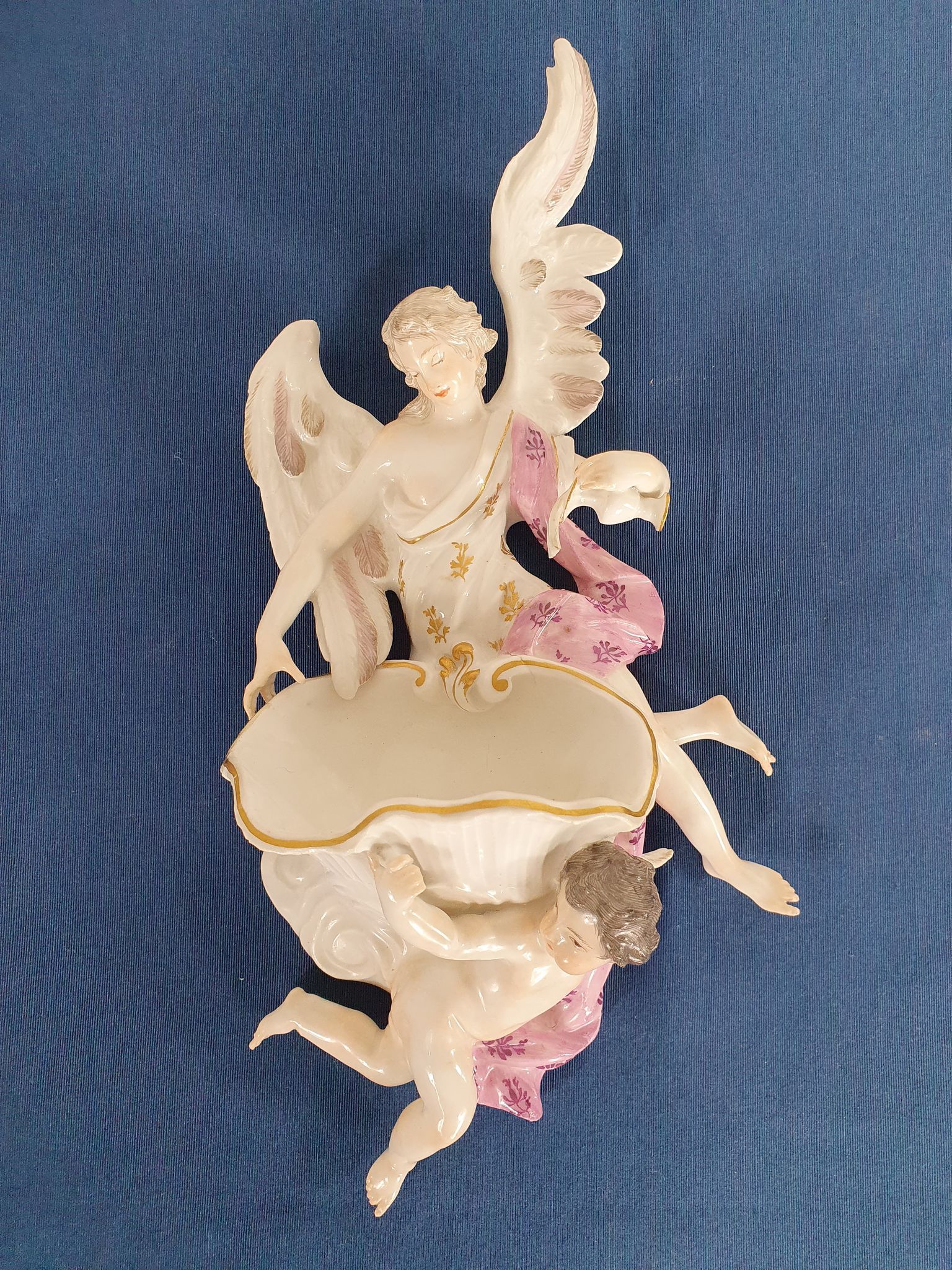
Histoire de la porcelaine de Meissen
La manufacture de Meissen, souvent désignée comme la fille aînée de la porcelaine européenne, marque un tournant majeur dans l’histoire des arts décoratifs en Europe.
Fondée en 1710 grâce à l’ambition d’Auguste le Fort, prince-électeur de Saxe, elle est le fruit d’un désir ardent de rivaliser avec les porcelaines d’Orient, alors considérées comme le summum du luxe et du raffinement.
La quête pour maîtriser cet art débute en 1709, lorsqu’un chimiste du nom de Friedrich Böttger met au point une formule permettant de produire de la porcelaine dure.
Cette découverte n’est pas le fruit du hasard, mais le résultat d’un effort concerté entre Auguste le Fort et Böttger, tous deux animés par la volonté de faire de l’Europe, et plus particulièrement de la Saxe, le premier centre de production de porcelaine dure.
La clé de cette prouesse réside dans les gisements de kaolin, découverts près de Meissen. Cette argile blanche, jusque-là utilisée comme agent blanchissant pour les perruques, s’avère être l’élément essentiel pour reproduire la porcelaine dure tant convoitée.
Böttger, en testant diverses substances pour imiter les porcelaines importées d’Extrême-Orient, découvre que le kaolin, une fois mélangé à d’autres matériaux et cuit à haute température, permet d’obtenir une pâte fine et résistante, comparable aux précieuses porcelaines chinoises.
Cette découverte révolutionnaire donne à la Saxe un avantage considérable sur le reste de l’Europe, notamment sur la France, où la manufacture de Sèvres mettra plus de 65 ans à percer le secret de la porcelaine dure.
Dès sa fondation, la manufacture de Meissen bénéficie du privilège royal, accordé par Auguste le Fort, qui assure ainsi à cette nouvelle industrie une protection et un monopole précieux. Ce privilège, combiné à la richesse des gisements de kaolin, garantit à la Saxe un contrôle total sur la production de porcelaine dure.
Auguste le Fort, visionnaire, ne se contente pas de protéger cette ressource stratégique ; il importe également des porcelaines d’Orient, principalement de Chine et du Japon, afin d’en comprendre les techniques de production.
Ces pièces, apportées par la Compagnie des Indes orientales, inspirent profondément les premiers artisans de Meissen, qui s’efforcent de reproduire la finesse et la beauté des porcelaines asiatiques.
Les premières créations de la manufacture de Meissen reflètent cette influence orientale, tant dans les motifs que dans les formes. Cependant, très vite, la manufacture développe son propre style, caractérisé par des décorations peintes à la main, souvent inspirées de la nature européenne.
Des fleurs délicates, des oiseaux exotiques, et plus tard des scènes mythologiques ornent les pièces sorties des fours de Meissen. La technique de la peinture sur porcelaine, nécessitant une grande dextérité, devient l’un des éléments distinctifs de la manufacture.
La production de la porcelaine dure à Meissen n’est pas seulement une prouesse technique, c’est aussi un symbole de pouvoir et de prestige. Les cours royales d’Europe se disputent les pièces de Meissen, qui deviennent rapidement synonymes de luxe et d’élégance.
Ce succès fulgurant incite de nombreuses autres manufactures à tenter de percer le secret de la porcelaine dure, mais aucune ne parvient à rivaliser avec Meissen avant plusieurs décennies.
Ce n’est qu’en 1774 que la manufacture royale de Sèvres, après de longues années de recherche, réussit enfin à produire de la porcelaine dure, marquant ainsi la fin de l’hégémonie saxonne dans ce domaine.
Ainsi, la manufacture royale de Meissen, fille aînée de la porcelaine européenne, non seulement initie une ère nouvelle dans l’histoire des arts décoratifs, mais elle établit également un standard d’excellence qui influencera profondément la production de porcelaine en Europe pendant des siècles.
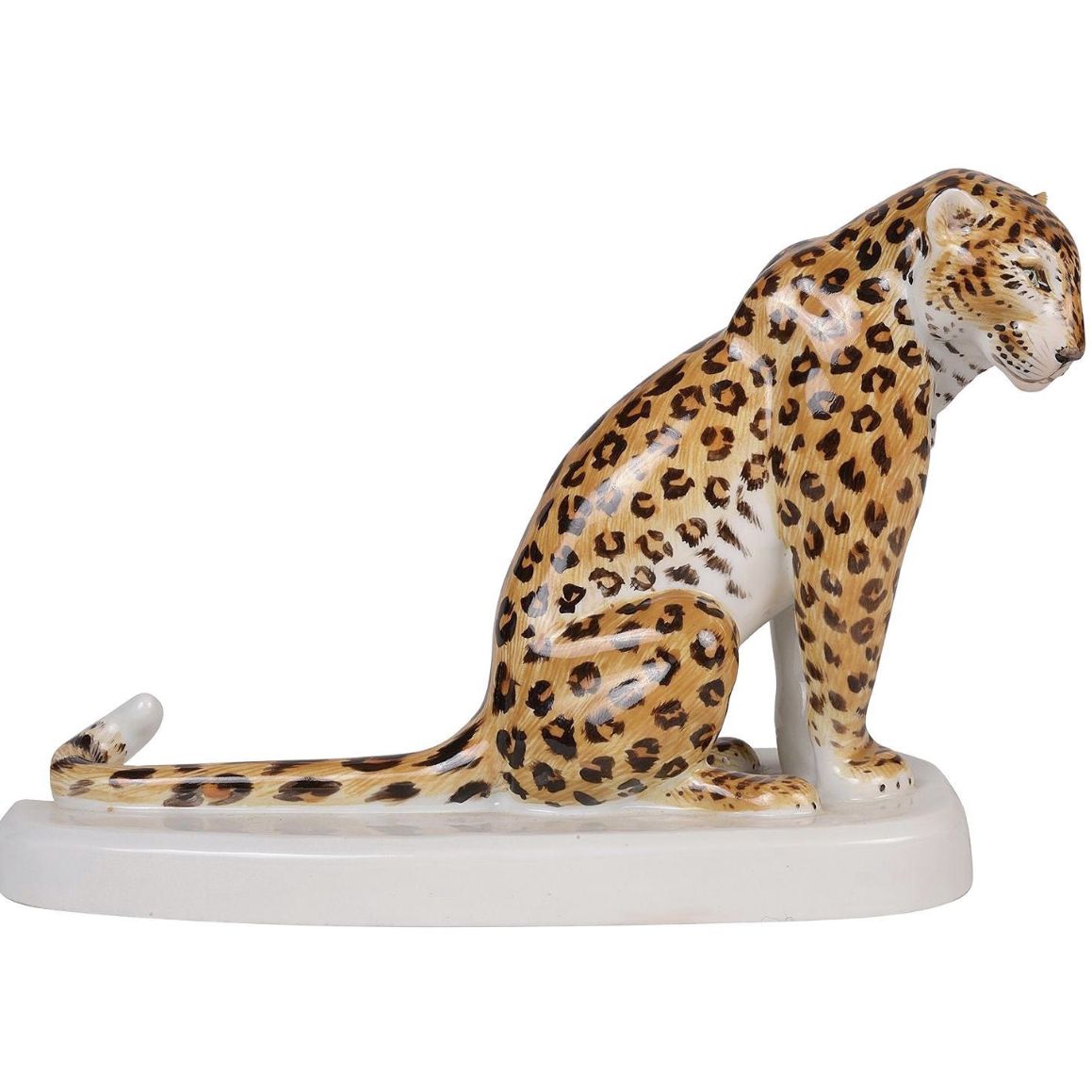
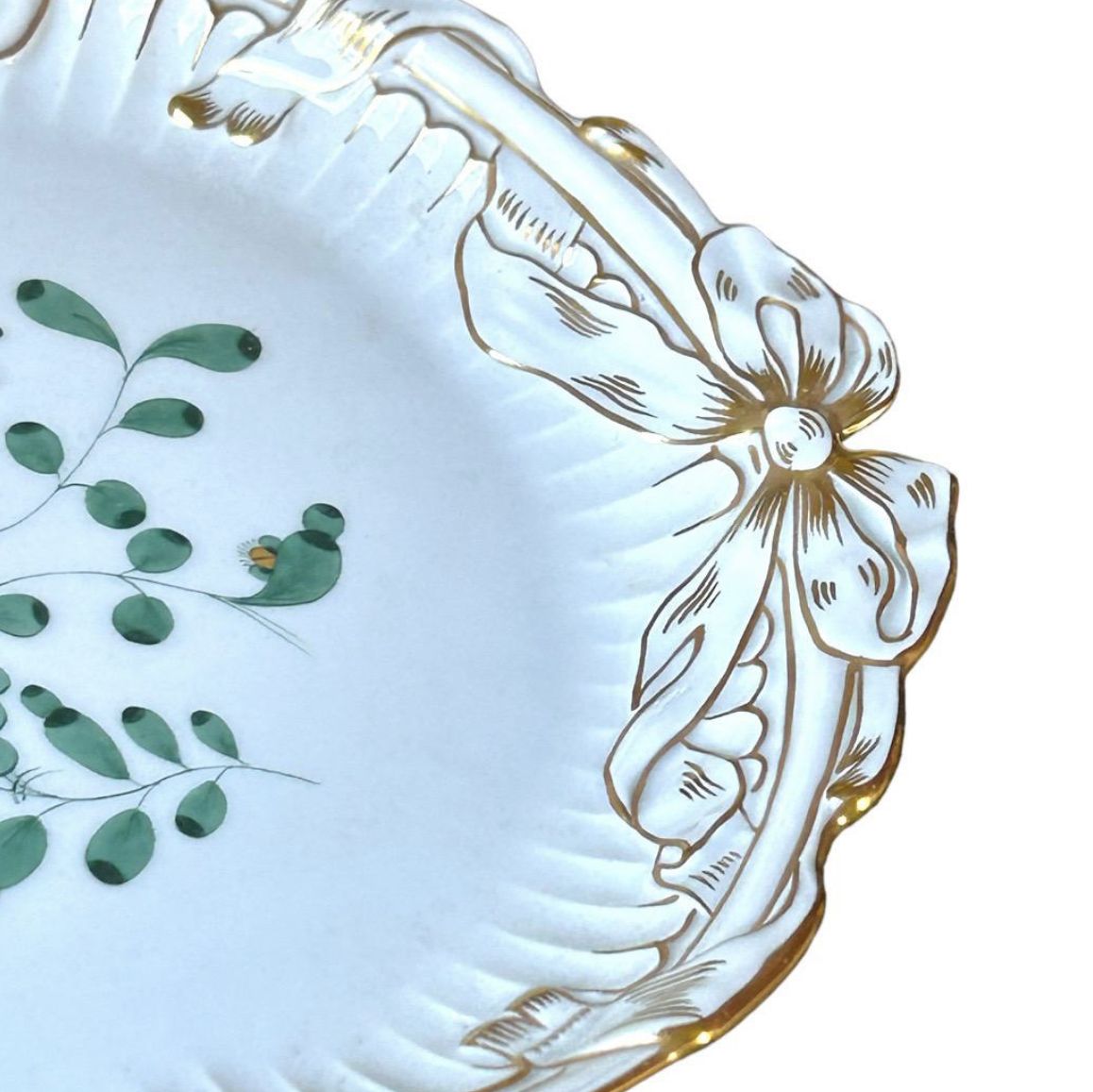
Focus sur le léopard en porcelaine de la manufacture de Meissen (XXème siècle)
Cette élégante sculpture en porcelaine de Meissen, datant du XXe siècle, représente un léopard assis avec une finesse remarquable.
Fidèle à la tradition de la manufacture, l'œuvre se distingue par une précision méticuleuse dans la reproduction des détails, tant dans les lignes sinueuses du corps félin que dans le traitement de son pelage tacheté.
Le léopard, capturé dans une posture attentive, semble prêt à bondir, traduisant ainsi la maîtrise technique des artisans de Meissen, capables de rendre la tension et l'élégance de l'animal.
Les motifs de la robe sont minutieusement peints à la main, avec des nuances subtiles dans les tons de jaune, brun et noir, conférant au léopard une allure à la fois majestueuse et réaliste.
Ce type de sculpture témoigne de l’adaptation de la manufacture aux goûts du XXe siècle, tout en conservant son savoir-faire séculaire en matière de porcelaine fine et artistique.
Michel Victor Acier, sculpteur français à Meissen
La cote de la porcelaine de Meissen
La porcelaine de Meissen, malgré une concurrence historique avec la prestigieuse porcelaine de Sèvres, conserve une place de choix sur le marché des enchères.
Sa cote varie principalement en fonction de l’état de conservation des pièces, de leur ancienneté et, dans certains cas, de la signature d’un artiste ayant contribué à leur création. Les collectionneurs apprécient particulièrement les pièces anciennes, dont les motifs et la finesse témoignent du savoir-faire unique de la manufacture.
Cependant, les prix réalisés lors des ventes aux enchères sont souvent inférieurs à ceux des porcelaines de Sèvres (vases, biscuits...), malgré un intérêt constant des acheteurs.
Les collectionneurs spécialisés recherchent avec soin des œuvres bien conservées, sachant que la moindre imperfection peut affecter la valeur d’une pièce.
Qu’il s’agisse de figurines, de services à thé ou de vases, la porcelaine de Meissen continue de séduire par son histoire riche et son esthétique raffinée, en dépit d’une cote légèrement en retrait par rapport à d’autres grandes manufactures européennes.
Reconnaître une pièce de la manufacture de Meissen
Les pièces produites par la manufacture de Meissen sont en général signées et poinçonnées. On les reconnaît grâce aux deux épées croisées qui sont à l’arrière de la pièce en porcelaine. En voici un exemple :
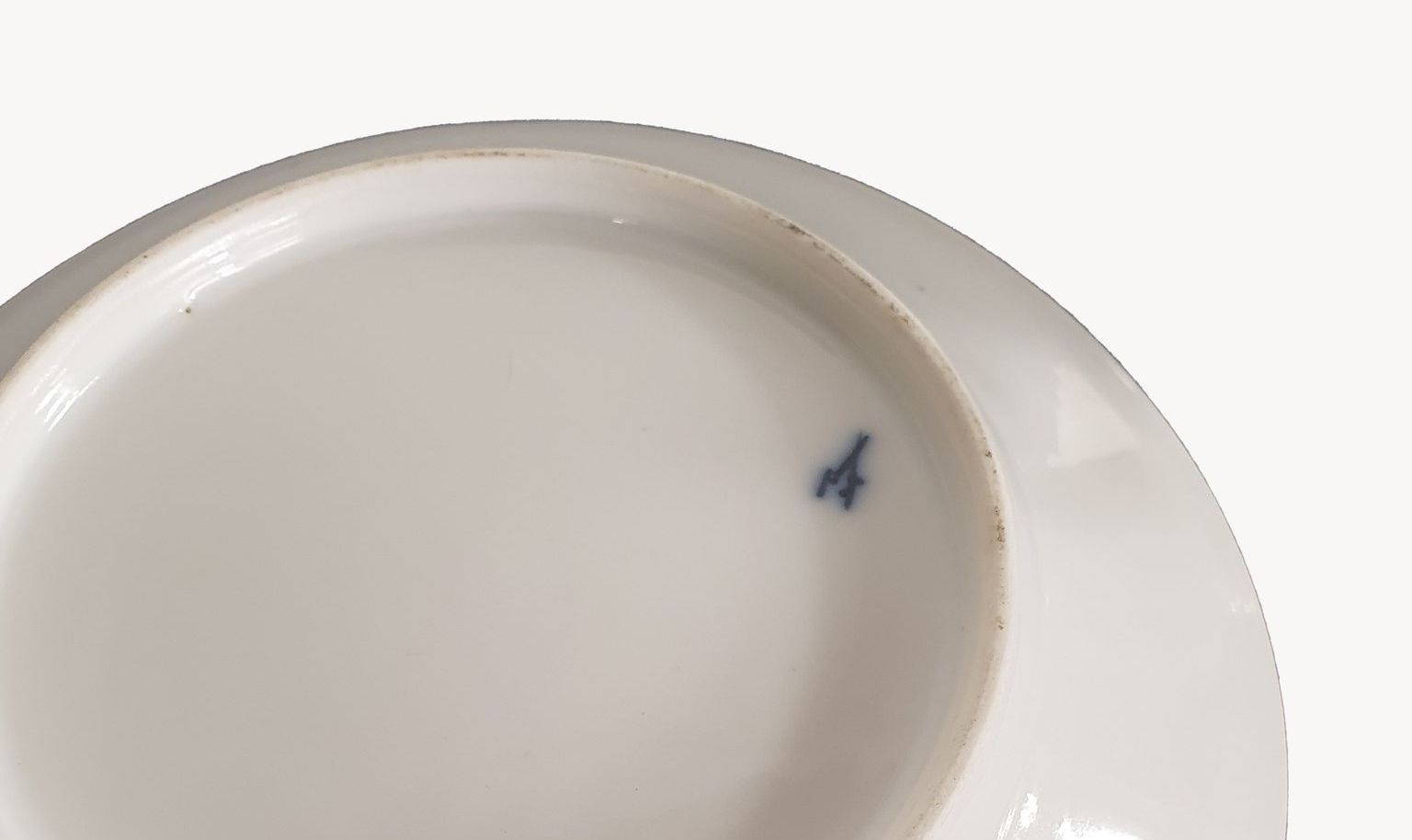
Connaître la valeur d’une œuvre
S’il s’avère que vous possédez une œuvre en porcelaine de Meissen ou d’après, n’hésitez pas à demander une évaluation gratuite moyennant notre formulaire sur notre site internet.
Un membre de notre équipe, composée d'experts et de commissaires-priseurs agréés, vous contactera promptement afin de vous communiquer l’estimation de la valeur marchande de votre œuvre, sans oublier de vous transmettre les informations ad hoc sur celle-ci.
Si vous considérez vendre votre œuvre, vous serez également accompagnés par nos spécialistes afin de bénéficier d’alternatives pour la céder au meilleur prix possible, prenant en compte les inclinations du marché.
Réponse en - de 24h
A découvrir dans la même thématique

Estimations gratuites par un commissaire-priseur à Brignoles
Nos commissaires-priseurs agréés se déplacent à Brignoles afin de vous délivrer des estimations 100% gratuites et confidentielles.
En savoir plus >

Estimations gratuites par un commissaire-priseur à Manosque
Nos commissaires-priseurs agréés se déplacent à Manosque pour vous délivrer des estimations 100% gratuites et confidentielles.
En savoir plus >

Estimations gratuites par un commissaire-priseur à Gap
Nos commissaires-priseurs agréés se déplacent à Gap pour vous délivrer des estimations 100% gratuites et confidentielles.
En savoir plus >
Site sécurisé, anonymat conservé
Commissaire-priseur et expert agréé par l'État
Estimations gratuites et certifiées
